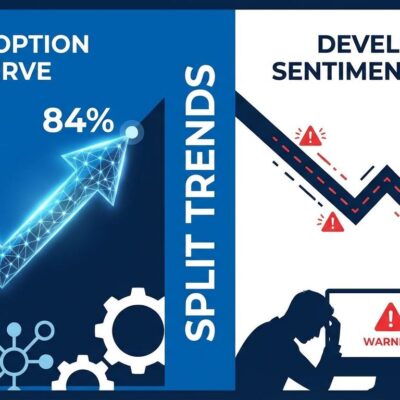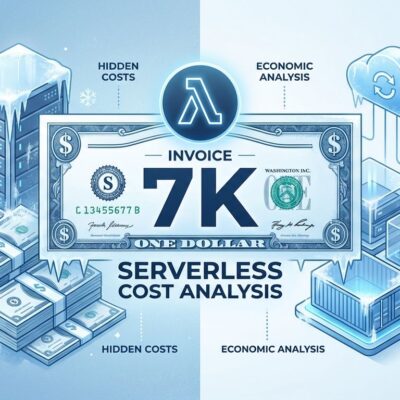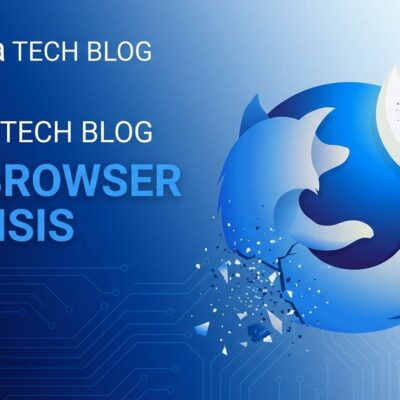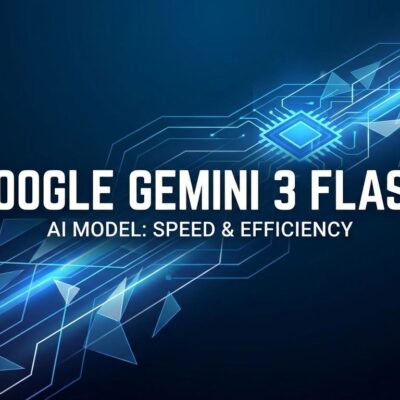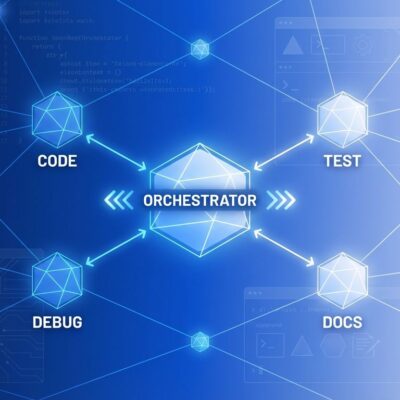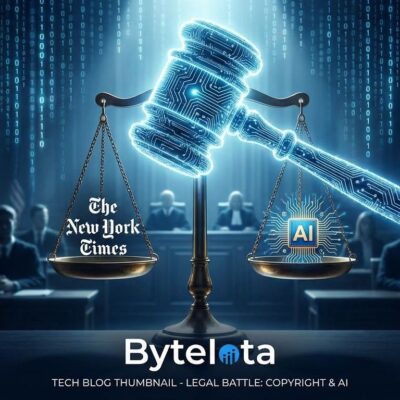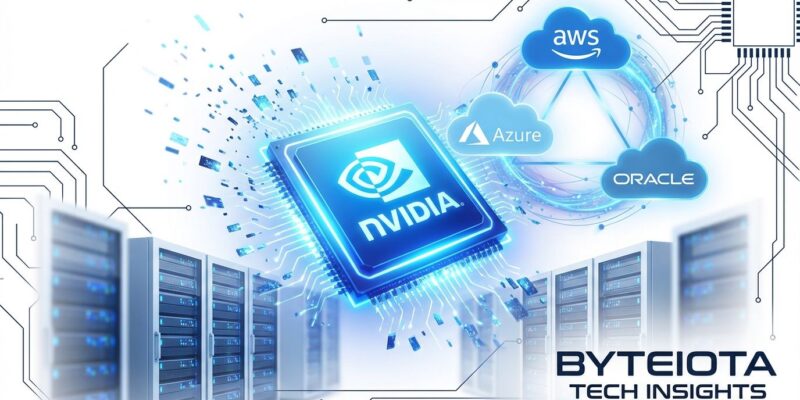
OpenAI signed a $38 billion, seven-year partnership with Amazon Web Services on November 3, securing access to hundreds of thousands of NVIDIA GB200 and GB300 GPUs—one of the largest cloud compute deals in AI history. Furthermore, the agreement formally ends OpenAI’s exclusive reliance on Microsoft Azure and marks a strategic shift as the company spreads nearly $600 billion across AWS, Microsoft, and Oracle. This isn’t just about more hardware. It’s about the infrastructure arms race accelerating to unprecedented levels.
What OpenAI Gets for $38 Billion
The deal gives OpenAI access to AWS EC2 UltraServers powered by NVIDIA’s latest Blackwell architecture—hundreds of thousands of GB200 and GB300 GPUs deployed in rack-scale, liquid-cooled systems. These aren’t incremental upgrades. Moreover, the GB200 delivers 30X faster real-time inference for trillion-parameter models compared to the previous generation. The GB300 pushes that even further with a 50% performance boost over GB200, packing 15 petaflops of compute and 288GB of HBM3e memory per GPU.
Each UltraServer clusters 72 GPUs into a single NVLink domain—essentially functioning as one massive GPU with 360 petaflops of FP8 compute and 13.4 TB of total memory. Additionally, AWS’s Elastic Fabric Adapter networking delivers 28.8 Tbps of bandwidth to interconnect these systems at scale. Full deployment is expected by the end of 2026, with room for expansion through 2027 and beyond.
This hardware enables OpenAI to train the next generation of models (think GPT-6, GPT-7) while simultaneously serving ChatGPT inference to millions of concurrent users. The performance gains aren’t academic—30X faster inference translates directly to lower latency and reduced operating costs at scale.
Breaking Up with Microsoft (Sort Of)
The AWS partnership formally ends OpenAI’s exclusive cloud relationship with Microsoft Azure, which began in 2019. However, the breakup is complicated. Despite signing the AWS deal, OpenAI maintains a $250 billion commitment to Microsoft Azure—keeping Microsoft as its largest cloud partner by dollar volume. In fact, add in a reported $300 billion contract with Oracle, and OpenAI is spreading nearly $600 billion across three cloud providers.
The timing tells the real story. The AWS deal came less than a week after OpenAI completed its for-profit restructuring, which ended Microsoft’s “right of first refusal” for OpenAI’s cloud infrastructure needs. For Microsoft, losing exclusivity stings symbolically even though they remain the biggest partner. Meanwhile, AWS stock jumped approximately 5 percent on the announcement, reflecting investor confidence in long-term AI compute demand.
This multi-cloud strategy isn’t just about redundancy. Consequently, it’s about ensuring GPU availability when supply is the bottleneck, avoiding vendor lock-in, and maintaining negotiating leverage with cloud providers. When you need hundreds of thousands of GPUs, you can’t afford to depend on a single source.
The GPU Monopolization Nobody’s Talking About
Here’s the uncomfortable truth: while OpenAI locks up hundreds of thousands of cutting-edge GPUs, 67% of AI startups can’t access enough compute to train their models, according to a 2024 Stanford survey. NVIDIA has publicly stated that every available chip is sold out and they could have sold more if inventory existed. Moreover, the supply chain bottlenecks are severe—lead times for high-bandwidth memory chips stretch 6 to 12 months, and TSMC’s advanced packaging capacity is fully booked through the end of 2025.
The financial barrier is equally brutal. H100 instances on hyperscale clouds cost $4 to $8 per hour. A100 instances run $3 to $5 per hour. Furthermore, hidden costs like storage sprawl, cross-region data transfers, and continuous retraining make up 60 to 80% of total cloud spend. Many organizations discover their actual costs run 40 to 60% higher than initial estimates.
Consider Microsoft’s Copilot economics: the company was losing more than $20 per user per month on a $10 subscription price point because compute costs averaged roughly $30 per user-month. These aren’t sustainable unit economics even for tech giants. Nevertheless, for seed-funded startups competing against companies spending $38 billion on infrastructure, the math is impossible.
The rhetoric around AI democratization rings hollow when one company can corner hundreds of thousands of GPUs while two-thirds of startups struggle to access basic compute. This is infrastructure monopolization creating a two-tier AI ecosystem—well-funded players with unlimited GPUs and everyone else.
Infrastructure Arms Race Accelerates
OpenAI’s $600 billion multi-cloud commitment isn’t happening in isolation. Similarly, Google recently committed tens of billions of dollars for Anthropic to access up to 1 million TPU chips. Anthropic’s annual recurring revenue jumped from $1 billion at the end of 2024 to $5 billion by mid-2025, fueled by massive infrastructure investments. Each frontier model generation requires 3 to 10X more compute than the last, and the exponential growth shows no signs of slowing.
The environmental implications are staggering. These data centers consume enormous amounts of power, though NVIDIA’s GB300 design does include innovations like energy storage in the power supply unit to reduce peak grid demand by 30%. Nevertheless, the aggregate power consumption raises serious sustainability questions.
Industry experts predict the GPU shortage will persist through 2026 at minimum. Supply will improve incrementally, but underlying demand continues growing faster than manufacturing capacity. As a result, only well-funded players can compete at the frontier, turning AI innovation from idea-driven to capital-intensive.
Key Takeaways
- OpenAI’s $38 billion AWS deal ends Microsoft Azure exclusivity but doesn’t replace it—the company maintains a $250 billion Azure commitment while diversifying with AWS and Oracle for a total of nearly $600 billion in multi-cloud infrastructure.
- The GPU shortage intensifies as tech giants lock up hundreds of thousands of chips: 67% of AI startups can’t access enough compute, with cloud costs ranging from $3 to $8 per hour for high-end GPUs and hidden expenses pushing actual spending 40 to 60% above estimates.
- The infrastructure arms race signals AI’s future direction—exponential compute requirements, rising cost barriers, and consolidation among players who can afford $38 billion budgets raise questions about whether trillion-parameter models are necessary or simply what happens when you have unlimited capital.
- For developers facing GPU constraints: consider smaller models, distillation techniques, quantization for inference, alternative chips like Google TPU or AWS Trainium, and spot instances for non-critical workloads—not every application needs frontier hardware.
The $38 billion question isn’t whether OpenAI needs this infrastructure to compete at the frontier. They clearly do. The real question is whether an AI ecosystem where success requires $600 billion in cloud commitments is sustainable, accessible, or even desirable. When compute becomes the moat instead of ideas, innovation doesn’t get democratized—it gets monopolized.

